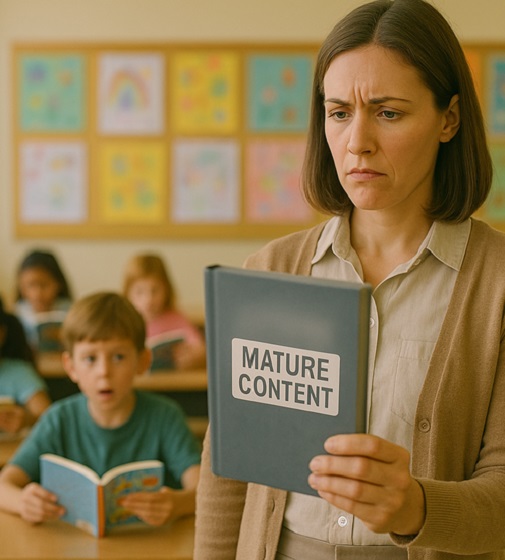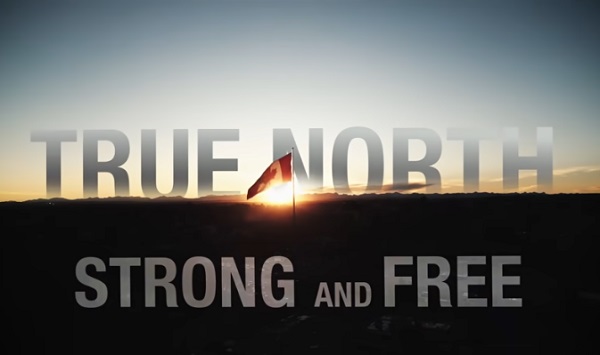Agriculture
Research Suggests Cattle Raising May Reduce Emissions
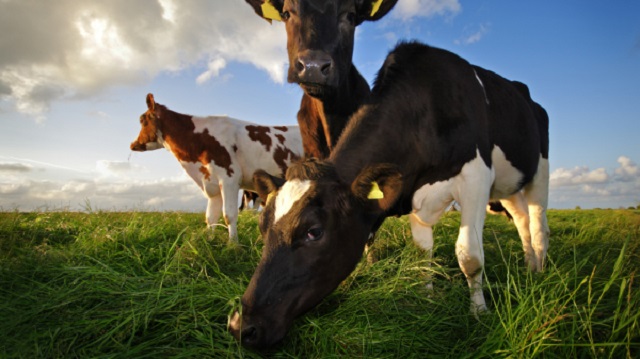
From Heartland Daily News
The United Nations Food and Agriculture Organization estimates that livestock production causes 11.1 of global greenhouse gas emissions worldwide, recommending people eat less meat to fight climate change.
Yet recent research suggests that under some climatic conditions or ecosystems, at least, cattle raising may actually result in lower emissions.
Alltech and Archbold examined the emissions from cattle raising in wetlands and ground that is regularly water laden. They found that although cattle accounted for 19 percent to 30 percent of emissions, the vast majority of the methane produced there was from the soil itself and the decomposing plant and animal life. As a result, they found, removing the cows actually produced a net increase in methane emissions.
Vaughn Holder, Ph.D., research project manager for beef nutrition at Alltech, who with Betsey Boughton, Ph.D., director of agroecology at Archbold, studied the impacts that cattle production has on the ecosystem on a wetlands pasture at Buck Island Ranch, about 150 miles northwest of Miami, Florida, notes that the production of agricultural emissions is more complex than simply ruminant eats plants = more methane emissions.
“There is a far more complex process in agriculture than it is in fossil fuel systems,” Holder told Just the News, which wrote:
Cattle are part of a carbon cycle. So if you just model the emissions coming from the animal, you’re missing the rest of the ecosystem, Holder said, which is absorbing carbon as a result of the animal being on the land.
When cattle graze on land, the plants prioritize root growth over the plant matter above the surface. The deeper the roots, the more plants sequester carbon in the soil through the photosynthesis process.
Grazing also removes grasses from a pasture, which reduces the dead plant matter that falls to the soil and decomposes, which also produces greenhouse gasses.
At the Buck Island Ranch, Boughton and her team measured the amount of greenhouse gases emitted on a pasture that had no grazing and compared it to pasture that had grazing. The data suggested grazing livestock were a net carbon sink compared to no grazing.
Of course, what’s true of a wetland’s ecosystem may not translate into more arid lands were cattle are often grazed, so more research is needed in order to know how cattle impact emissions in other environments.
However, as Holder and Boughton point out, quite aside from reducing emissions from wetlands, cattle and other livestock also consume a lot of plants humans can’t eat, turning them into them into edible proteins humans can consume, increasing global food security while reducing the emissions from the decomposition of the plants when they otherwise naturally die. In addition, livestock also consume a lot of food byproducts that humans either can’t or prefer not to eat, like orange pulp used in orange juice production. Although such byproducts can be used in composting, Holder notes, “composting increases emissions five times more than feeding it to dairy cows and byproducts disposed of in landfills produced 50 times more emissions than if it is fed to dairy cows.”
The research suggests that when accounting for livestock emissions, one should do an all-things- considered comparison, accounting for not just the emissions from cattle and sheep, but also from the material they consume that otherwise would have produced emissions by other means.
Sources: Just the News; Understanding the Carbon Cycle on a Cattle Ranch
Agriculture
In the USA, Food Trumps Green Energy, Wind And Solar
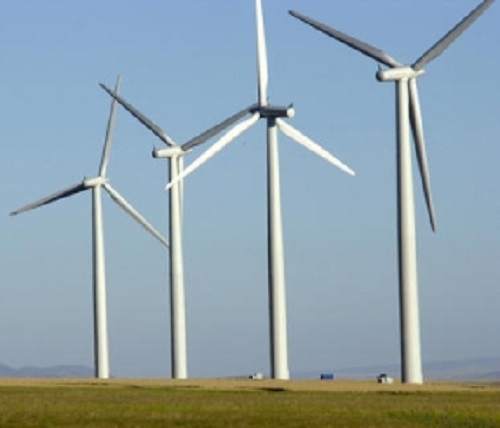

From the Daily Caller News Foundation
By Bonner Cohen
“We will not approve wind or farmer destroying Solar,” said President Trump in an Aug. 20 post on Truth Social. “The days of stupidity are over in the USA!!!”
Trump’s remarks came six weeks after enactment of his One Big Beautiful Bill terminated tax credits for wind and solar projects by the end of 2027.
The Trump administration has also issued a stop-work order for the Revolution Wind project, an industrial-scale offshore wind project 12 miles off the Rhode Island coast that was 80 percent completed. This was followed by an Aug. 29 announcement by the Department of Transportation that it was cutting around $679 million in federal funding for 12 offshore wind farms in 11 states, calling the projects “wasteful.”
Sending an unmistakable message to investors to avoid risking their capital on no-longer-fashionable green energy, the Department of Agriculture (USDA) is pulling the plug on a slew of funding programs for wind and solar power.
“Our prime farmland should not be wasted and replaced with green new deal subsidized solar panels,” said Agriculture Secretary Brooke Rollins on a visit to Tennessee in late August. “We are no longer allowing businesses to use your taxpayer dollars to fund solar projects on prime American farmland, and we will no longer allow solar panels manufactured by foreign adversaries to be used in our USDA-funded projects.”
The White House is putting the squeeze on an industry that can ill-afford to lose the privileges it has enjoyed for so many years. Acknowledging the hesitancy of investors to fund green-energy projects with the looming phaseout of federal subsidies, James Holmes, CEO of Solx, a solar module manufacturer, told The Washington Post, “We’re seeing some paralysis in decision-making in the developer world right now.” He added, “There’s been a pretty significant hit to our industry, but we’ll get through it.”
That may not be easy. According to SolarInsure, a firm that tracks the commercial performance of the domestic solar industry, over 100 solar companies declared bankruptcy or shut down in 2024—a year before the second Trump administration started turning the screws on the industry.
As wind and solar companies confront an increasingly unfavorable commercial and political climate, green energy is also taking a hit from its global financial support network.
The United Nations-backed Net Zero Banking Alliance (NZBA) “has suspended activities, following the departure of numerous financial institutions from its ranks amid political pressure from the Trump administration,” The Wall Street Journal reported. Established in 2021, the NZBA’s 120 banks in 40 countries were a formidable element in global decarbonization schemes, which included support for wind and solar power. Among the U.S. banks that headed for the exits in the aftermath of Trump’s election were JP Morgan, Citi, and Morgan Stanley. They have been joined more recently by European heavyweights HSBC, Barclays, and UBS.
Wind and solar power require a lot of upfront capital, and investors may be having second thoughts about placing their bets on what looks like a losing horse.
“Wind and solar energy are dilute, intermittent, fragile, surface-intensive, transmission-extensive, and government-dependent,” notes Robert Bradley, founder and CEO of the Institute for Energy Research.
Given these inherent disadvantages of wind and solar power, it’s no surprise that the Department of Agriculture is throttling the flow of taxpayer money to solar projects. The USDA’s mission is to “provide leadership on food, agriculture, food, natural resources, rural development, nutrition, and related issues….” It is not to help prop up an industry whose best days are behind it.
Effective immediately, wind and solar projects will no longer be eligible for USDA Rural Development Business and Industry (B&I) Guaranteed Loan Program. A second USDA energy-related guaranteed loan program, known by the acronym REAP, will henceforth require that wind and solar installations on farms and ranches be “right-sized for their facilities.”
If project applications include ground-mounted solar photovoltaic systems larger than 50 kilowatts or such systems that “cannot document historical energy usage,” they will not be eligible for REAP.
Ending Misallocation Of Resources
“For too long, Washington bureaucrats and foreign adversaries have tried to dictate how we use our land and our resources,” said Republican Rep. Harriot Hagermann of Wyoming. “Taxpayers should never be forced to bankroll green new deal scams that destroy our farmland and undermine our food security.”
Hagermann’s citing of “foreign adversaries” is a clear reference to China, which is by far the world’s leading manufacturer of solar panels, according to the International Energy Agency.
According to a USDA study from 2024, 424,000 acres of rural land were home to wind turbines and solar arrays in 2020. While this – outdated – figure represents less than 0.05 percent of the nearly 900 million acres of farmland in the U.S., the prospect of ever-increasing amounts of farmland being taken out of full-time food production to support part-time energy was enough to persuade USDA that a change of course was in order.
Bonner Russell Cohen, Ph. D., is a senior policy analyst with the Committee for a Constructive Tomorrow (CFACT).
Agriculture
USDA reverses course under Trump, scraps Biden-era “socially disadvantaged” farm rules

Quick Hit:
The Trump administration’s USDA is pulling back from defending Biden-era farm aid programs that gave preferential treatment based on race and gender. The move aligns with President Trump’s directive to dismantle remaining diversity, equity, and inclusion initiatives across federal agencies.
Key Details:
- The Wisconsin Institute for Law and Liberty (WILL) sued on behalf of dairy farmer Adam Faust, challenging USDA aid programs that favor minorities and women.
- Programs under scrutiny include loan guarantees, dairy coverage, and conservation incentives, all of which disadvantaged white male farmers.
- USDA issued a final rule eliminating “socially disadvantaged” designations, stating programs must uphold meritocracy, fairness, and equal opportunity.
Diving Deeper:
The U.S. Department of Agriculture under the Trump administration is abandoning its defense of farm aid programs created during the Biden years that granted benefits based on race and gender. In a recent court filing, the USDA declined to defend several programs that civil rights watchdogs argue discriminated against white male farmers.
The litigation was brought forward by the Wisconsin Institute for Law and Liberty (WILL) on behalf of Adam Faust, a Wisconsin dairy farmer. Faust contends that the Biden-era rules violated equal protection principles by privileging minorities and women over others in loan guarantees, dairy margin coverage, and conservation cost-share programs.
Under the loan guarantee program, minority and female farmers could secure up to 95% federal backing on loans, while white male farmers were limited to 90%. This disparity directly affected borrowing power and interest rates. Similarly, the Dairy Margin Coverage Program charged white male farmers a $100 annual fee, while exempting “socially disadvantaged” farmers. In conservation projects, minority and female participants received up to 90% reimbursement for costs, while others received only 75%.
On July 10, the USDA issued a final rule to strike the “socially disadvantaged” designation from its regulations, calling it inconsistent with constitutional principles and with President Trump’s policy objectives. “Moving forward,” the USDA rule stated, “USDA will no longer apply race- or sex-based criteria in its decision-making processes, ensuring that its programs are administered in a manner that upholds the principles of meritocracy, fairness, and equal opportunity for all participants.”
The department noted that while the loan guarantee program will be amended immediately, officials are still reviewing how to apply the new policy to the dairy and conservation programs. The USDA also signaled that its decision “could obviate the need for further litigation,” though WILL has indicated its legal fight will continue.
“This lawsuit served as a much-needed reminder to the USDA that President Trump has ordered the end to all federal DEI programs,” said Dan Lennington, deputy legal counsel at WILL. “There’s more work to be done, but today’s victory gives us a clear path to do even more in the name of equality.”
-

 Crime1 day ago
Crime1 day agoFormer NYPD Inspector Breaks Down How Charlie Kirk’s Shooter Will Be Caught
-
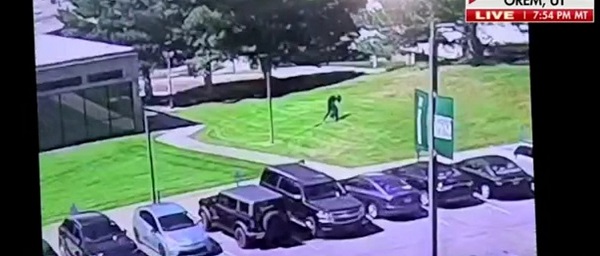
 Crime1 day ago
Crime1 day agoSurveillance video shows Charlie Kirk’s killer slipping away moments after shooting
-

 Crime1 day ago
Crime1 day agoArrest made in Charlie Kirk assassination
-

 Bruce Dowbiggin2 days ago
Bruce Dowbiggin2 days agoKirk’s Killing: Which Side Can Count on the Military’s Loyalty Now?
-

 Alberta2 days ago
Alberta2 days agoProvincial pension plan could boost retirement savings for Albertans
-

 Crime2 days ago
Crime2 days agoFBI offering $100,000 reward for information leading to arrest of Charlie Kirk Assassin
-

 Censorship Industrial Complex2 days ago
Censorship Industrial Complex2 days agoUK’s top cop wants to ‘stop policing tweets’: report
-

 Crime2 days ago
Crime2 days agoWeapon recovered, manhunt for suspect continues in Kirk assassination investigation



